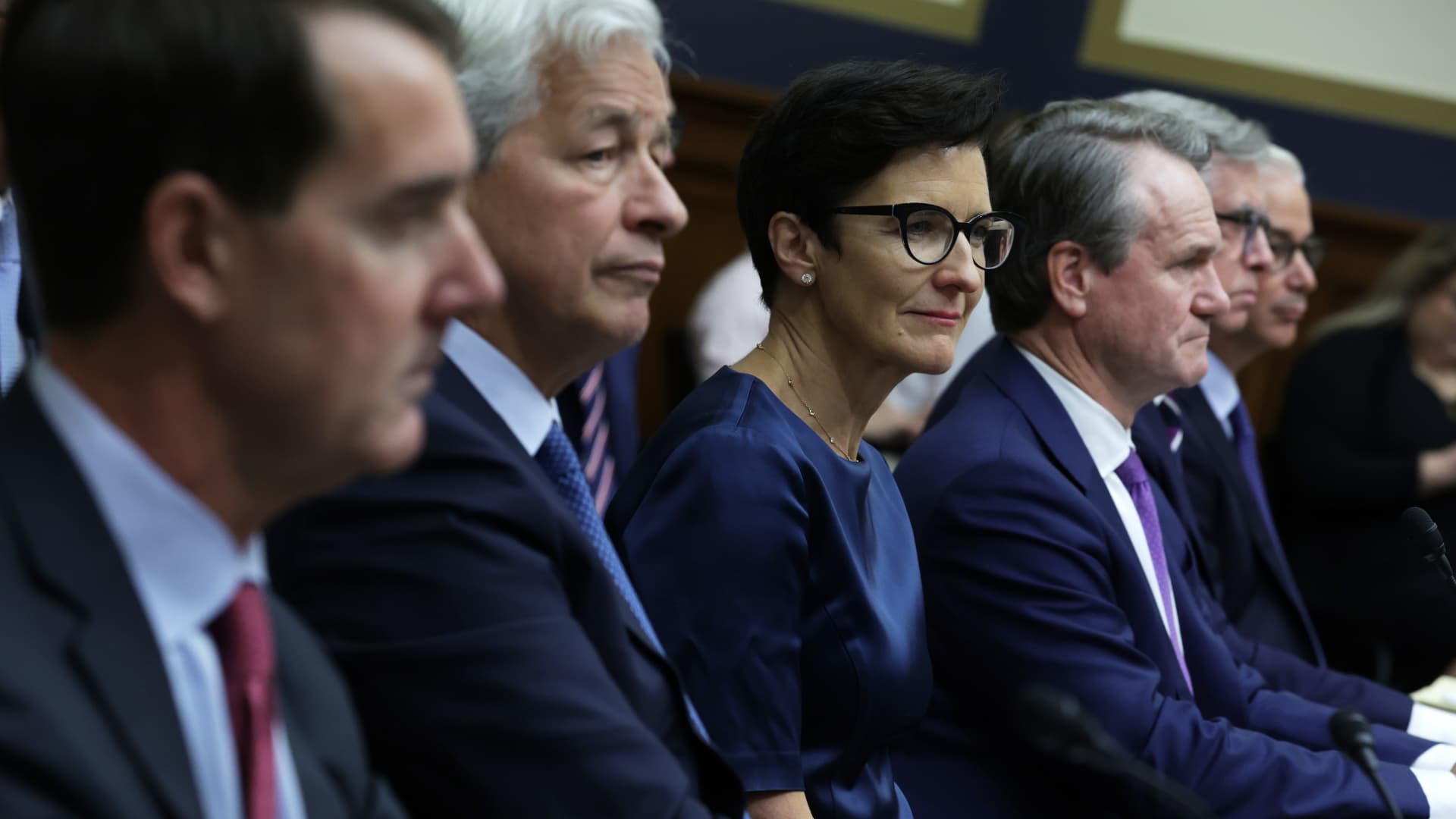[ad_1]
Big American banks have mostly resisted bulking up loan loss reserves this year as the financial health of consumers and corporations has held up despite mounting recession concerns. That may be about to change as industry giants including JPMorgan Chase and Citigroup report third-quarter results Friday, giving investors the latest view into how a slowing U.S. economy is affecting households and companies. For much of the year, bank managers have told one story, while stocks have told another. Retail customers were spending briskly and still had ample cash in their accounts, executives including Bank of America CEO Brian Moynihan have said . That has created some of the industry’s best conditions in decades for getting repaid on loans like credit card debt and auto borrowing. Meanwhile, interest rate increases by the Federal Reserve have helped to fatten profit margins on banks’ core lending activities. But bank stocks have been battered as the Fed’s aggressive inflation-fighting campaign has increased the odds of an economic downturn, which would force the industry to set aside billions of dollars for loan losses. The KBW Bank Index has fallen 28% this year as shares of the three biggest U.S. banks by assets — JPMorgan Chase, Bank of America and Citigroup — each hit fresh 52-week lows Wednesday. As the Fed’s rate hikes ripple through the U.S. economy and around the world and inflation remains stubbornly high , banks could begin to “more actively rebuild loan loss reserves” this quarter, Barclays bank analyst Jason Goldberg said Wednesday in a note. The six biggest U.S. banks by assets are expected to set aside a combined $4.5 billion for potential loan losses, according to analyst estimates. That would appear to confirm warnings from JPMorgan CEO Jamie Dimon , who has raised alarms about where the economy is headed, saying this week that he saw a recession hitting the U.S. next year. That follows his declaration in June that a financial “hurricane” was on the horizon, thanks to the Fed’s actions and global events including the Ukraine war. It’s possible that Dimon’s statements “about a looming recession will give the company air cover to boost reserves more than the company would have otherwise,” Goldberg said. In April, JPMorgan was the first big bank to begin boosting reserves for credit losses, taking a $902 million charge. That could cause JPMorgan to miss profit estimates for the second quarter in a row. Analysts expect the New York-based bank to generate $2.90 per share in third-quarter earnings, 22% lower than a year earlier. In an Oct. 5 report warning investors to prepare for a “rocky ride,” Morgan Stanley banking analyst Betsy Graseck said signs that the Fed needs to keep interest rates elevated for longer caused her to boost her estimated loan loss provisions. She also expects lower investment banking revenue. Higher rates are boosting interest income, but have also cut into fees for mortgage lending, while lower asset values have hurt wealth management and investment banking revenue and forced banks to book writedowns. Ironically, if bank managers show investors that, like Dimon, they too have begun bracing for a recession, that could serve as a turning point for the industry’s stock prices, according to UBS banking analyst Erika Najarian. Investors are waiting for banks to “rip off the proverbial Band-Aid” and begin building loan loss reserves commensurate with a recession, as well as revise deposit costs higher, Najarian said Tuesday in a note. “We think downward credit- and deposit pricing-related revisions will eventually be seen as a sign that banks have then fully priced in a recession,” the analyst said. That’s because institutional investors are “waiting for a more ‘cathartic’ moment that would signal the stocks have troughed” before plowing into the sector, she said.
[ad_2]
Image and article originally from www.cnbc.com. Read the original article here.

